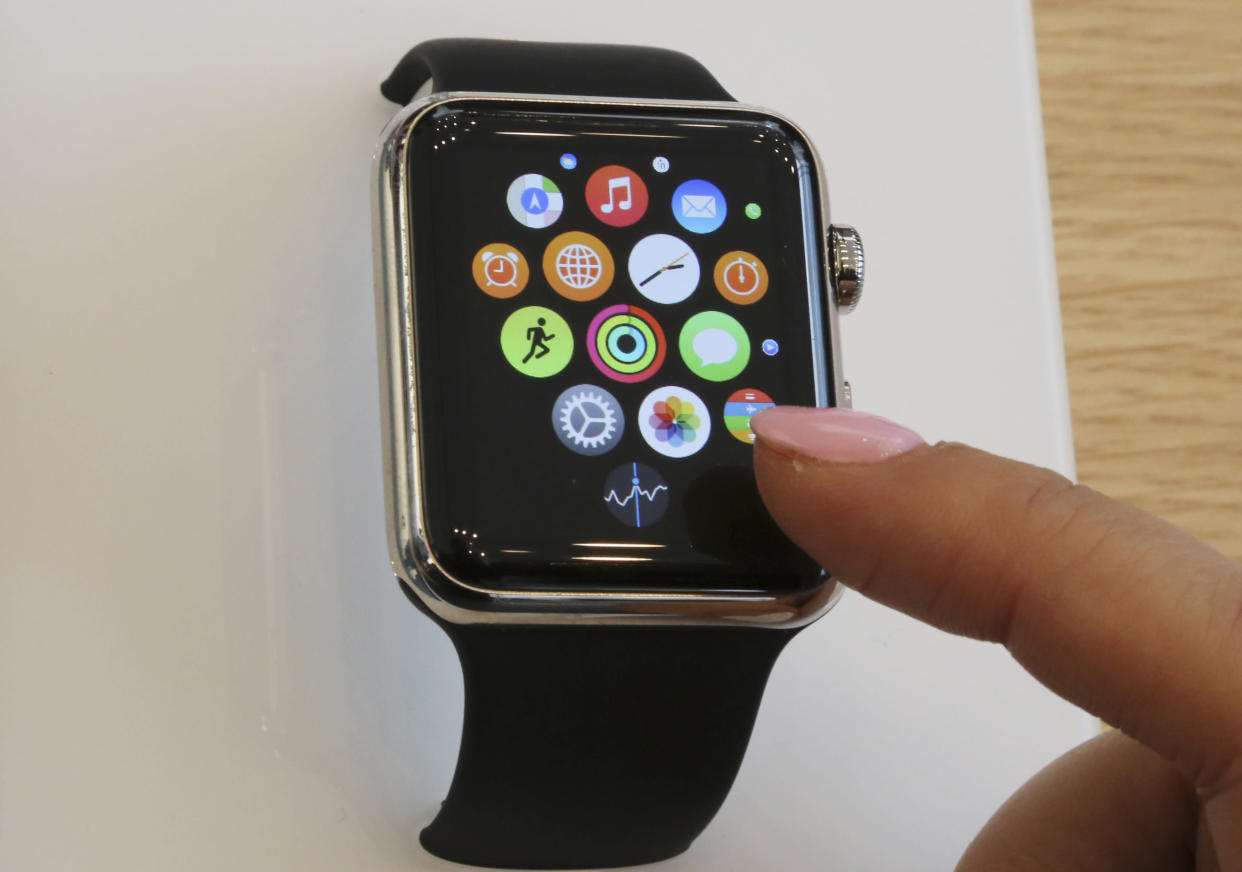Most companies let Apple 'trample' on them: Biometrics company co-founder

Reports of a settlement between Apple (AAPL) and technology company Valencell Inc., emerged on Tuesday concerning a patent dispute over heart rate sensor technology used in the Apple Watch.
Raleigh-based biometric sensor manufacturer, Valencell, alleged in a 2016 complaint filed in a federal district court for the Eastern District of North Carolina, that Apple infringed four of its patents and breached contracts covering wearable light-guided sensors and methods for generating motion-related physiological information.
The parties reached a settlement in September 2018, according to Valencell’s president and co-founder Dr. Steven LeBoeuf. Valencell filed a separate lawsuit against Fitbit (FIT) around the same time, which remains in dispute.
“We're very different than other [patent] litigation, that big companies like Apple experience,” LeBoeuf told Yahoo Finance. “If you look at Apple’s history of litigation...they’re either large companies, or trolls — one-man-bands, or these large groups of holding companies — that might assert.”
“We had to think about did we want to do this?” LeBoeuf said. “Most small companies decide to let themselves be trampled on because it makes a lot of sense.”
‘A heart-rate monitor that was substantially similar to the Apple Watch’
The amount of any financial compensation exchanged between the parties was not disclosed in the Stipulation of Dismissal, nor was LeBoeuf at liberty to comment on settlement figures.
“The terms of the settlement are confidential,” LeBoeuf said, adding that he could not comment on near term or long term financial aspects of the settlement.
The technology at issue involves optical light sensors embedded in the back of the Apple Watch that are capable of tracking heart rate and other physiological information.
According to Valencell’s complaint, during the time Apple was developing the Apple Watch, beginning in February 2013, Apple contacted Valencell to express interest in its heart sensor technology. Valencell said that seven individuals from Apple, all who were involved in designing or implementing the first version of the Apple Watch, submitted fictitious names in order to obtain white papers related to Valencell’s biometric sensors. Valencell said it provided Apple with a prototype of its proprietary watch, including a back-facing heart-rate sensor, based on requests from Apple to license the technology.
“The back of the watch included a heart-rate monitor that was substantially similar to the Apple Watch,” the complaint states. Valencell claimed that Apple used the prototypes Valencell provided in anticipation of licensing its technology to Apple to conduct detailed testing and analysis on its proprietary sensor circuits. “Apple solicited technical information and know-how from Valencell on the false premise that it wished to license Valencell’s PerformTek Technology,” the filing alleged. “Instead, Apple’s interaction with Valencell was fueled by a business decision that the benefits of infringing upon Valencell’s patented technology outweigh the risk of being caught and ultimately forced to pay damages.”
Apple promoted light sensor heart rate monitors in 2015 when it first released the Apple Watch.
The four patents originally at issue included: Wearable light-guiding bands for physiological monitoring; Methods and apparatus for generating data output containing physiological and motion-related information; Light-guiding devices and monitoring devices incorporating same; and Wearable light-guiding devices for physiological monitoring. In June, the U.S. Patent Trial and Appeal Board partially invalidated the “Methods” patent, finding 13 of its claims unpatentable based on prior art.
Another of Valencell’s patents involved in the lawsuit protects a wearable band with an optical emitter and detector that is configured to deliver light from the optical emitter to locations of the body, and return light to the optical detector.
LeBoeuf said two of Valencell’s key technologies were at issue in the Apple dispute: one is a motion-tolerant light-guided heart rate monitor, and the other is optical syncing that is scalable to a mobile environment.
Valencell had requested in its complaint that the court grant enhanced damages, enforce Apple’s alleged contractual obligations to Valencell, and issue an injunction to prevent Apple from continuing to use its allegedly infringing technology.
Yahoo Finance requested a response from Apple concerning the settlement and Valencell’s claim that Apple infringed four of its patents. Apple did not immediately respond.
In Apple’s most recent annual report filed on September 29, 2018 the company said it settled matters during Q4 2018 that “did not individually or in the aggregate have a material impact on the company’s financial condition or operating results.”
Alexis Keenan is a New York-based reporter for Yahoo Finance. She previously produced live news for CNN and is a former litigation attorney. Follow her on Twitter at @alexiskweed
More from Alexis:
Disabled San Diego residents sue over e-scooter ‘obstacle course’
How legalized cannabis changed Colorado in the past five years
Legal experts disagree on whether Trump can declare 'emergency' to build his wall

